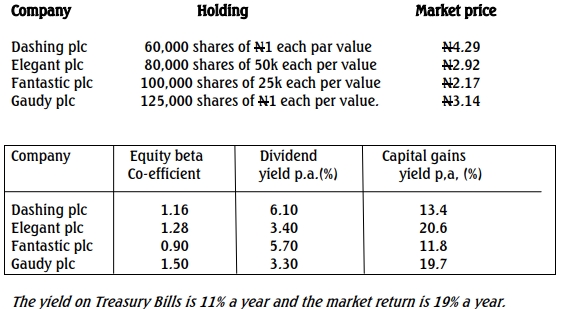Opeyemi operates in an economy that has almost zero inflation. Management ignores inflation when evaluating investment projects because it is very low and considered insignificant. Opeyemi is evaluating a number of similar, alternative investments. The company uses an after-tax cost of capital of 6% and has already completed the evaluation of two investments.
The third investment is a new product that would be produced on a just-in-time basis and is expected to have a life of three years. This investment requires an immediate cash outflow of N200,000, which does not qualify for tax depreciation. The expected residual value at the end of the project’s life is N50,000.
A draft financial statement showing the values that are specific to this investment for the three years is as follows:
| Year |
1 |
2 |
3 |
| Sales |
230,000 |
350,000 |
270,000 |
| Production Costs: |
|
|
|
| Materials |
54,000 |
102,000 |
66,000 |
| Labour |
60,000 |
80,000 |
70,000 |
| Other* |
80,000 |
90,000 |
80,000 |
| Profit |
36,000 |
78,000 |
54,000 |
| Closing Receivables |
20,000 |
30,000 |
25,000 |
| Closing Payables |
6,000 |
9,000 |
8,000 |
*Other production costs shown above include depreciation calculated using the straight-line method.
The company is liable to pay corporate tax at a rate of 30% of its profits. One half of this is payable in the same year as the profit is earned, and the remainder is payable in the following year.
Required:
a. Calculate the net present value of the above investment proposal. (14 Marks)
b. Explain how the above investment project would be appraised if there were to be a change in the rate of inflation, so that it became too significant to be ignored. (3 Marks)
c. The evaluation of the other two investments is shown below:
| Investment |
Initial Investment |
Net Present Value |
| W |
300,000 |
75,000 |
| Y |
100,000 |
27,000 |
The company only has N400,000 of funds available. All of the investment proposals are non-divisible. None of the investments may be repeated.
Required:
Recommend, with supporting calculations, which of the three investment proposals should be accepted. (3 Marks)


